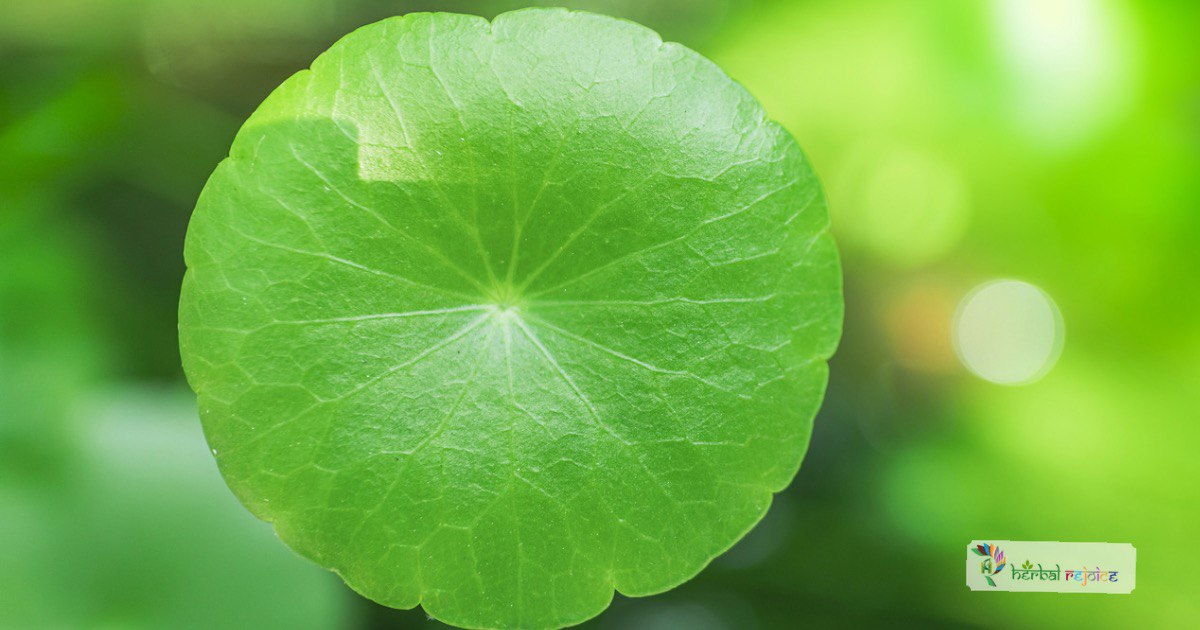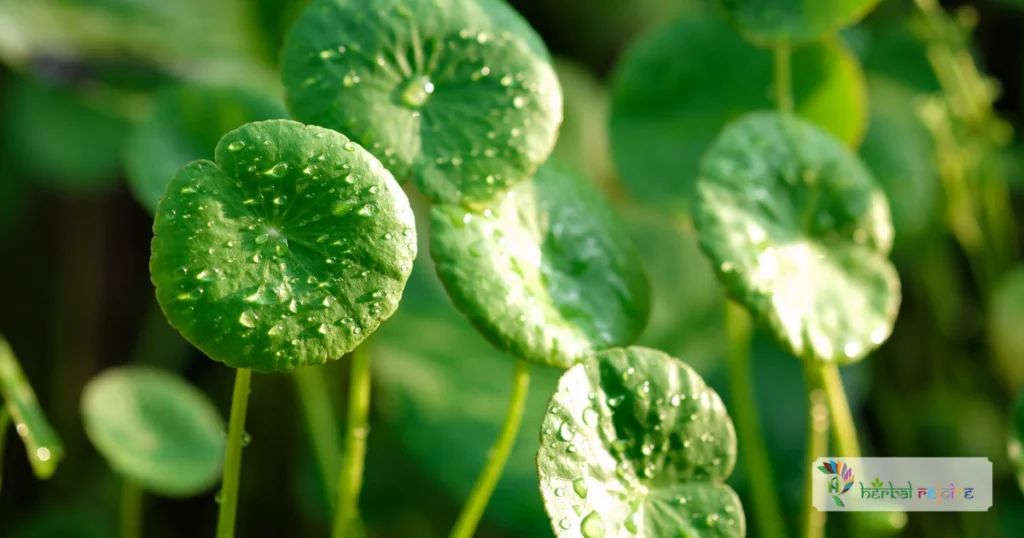Introduction:
Gotu Kola (Centella asiatica), also known as Asiatic Pennywort or Indian Pennywort, is a versatile plant that thrives in marshy places across India.
Gotu Kola is used as a brain tonic to improve memory, overcome mental confusion, combat stress, fatigue and to treat third degree burns, leprosy and ulcers.
In this extensive guide, we will delve into the English and scientific names, traditional uses, chemical composition, and potential health benefits of Centella asiatica.
By shedding light on its unique qualities, we aim to uncover the significance of this plant and its potential contributions to overall well-being.
Names and Habitat of Gotu Kola
Centella asiatica, commonly referred to as Asiatic Pennywort or Indian Pennywort, belongs to the Umbelliferae/Apiaceae family. It can be found in marshy places throughout India, up to an elevation of 200 meters.
Traditional Uses and Benefits Of Gotu kola
Centella asiatica has a rich history of traditional usage and is highly valued for its diverse range of health benefits.
1. Brain Tonic and Memory Enhancement:
Centella asiatica is used as a brain tonic to improve memory, overcome mental confusion, and combat stress and fatigue. It is considered a valuable herb for enhancing cognitive function.
2. Skin Health and Healing:
Traditionally, Centella asiatica has been used to treat obstinate skin diseases and even leprosy. Its application has shown promising results in accelerating the healing process, especially in cases of chronic postsurgical and post-trauma wounds, as well as second and third-degree burns.
3. Stress-Induced Stomach and Duodenal Ulcers:
Oral administration of Centella asiatica extracts can be effective in treating stress-induced stomach and duodenal ulcers. Its properties as an adaptogen, central nervous system relaxant, and sedative contribute to its ability to alleviate stress-related gastrointestinal issues.

Chemical Composition and Key Components Of Gotu Kola
Centella asiatica contains various chemical compounds that contribute to its potential health benefits.
1. Triterpenoid Saponins – Brahmoside, Asiaticoside, Thankuniside:
The plant is rich in triterpenoid saponins such as brahmoside, asiaticoside, and thankuniside. Brahmoside, specifically found in Centella asiatica, has reported tranquilizing and anabolic properties.
2. Alkaloids – Hydrocotyline; Bitter Principles – Vellarin:
Centella asiatica contains alkaloids such as hydrocotyline, as well as bitter principles like vellarin. These components contribute to the herb’s therapeutic properties.
3. Asiaticoside and Centelloside:
Asiaticoside and centelloside, derived from Centella asiatica leaves, have shown potential in the treatment of leprosy. They exhibit antibacterial properties by inhibiting the growth of Bacillus leprae and reducing the number of tubercular lesions in experimental animals.
Potential Health Benefits Of Gotu Kola
Centella asiatica demonstrates promising potential for various health benefits.
1. Cognitive Enhancement:
As a brain tonic, Centella asiatica may enhance memory and cognitive function, providing support for mental clarity and focus.
2. Skin Regeneration and Wound Healing:
Centella asiatica’s skin-healing properties make it a valuable natural remedy for chronic wounds, burns, and other skin conditions. It accelerates the healing process and promotes tissue regeneration.
3. Gastrointestinal Health:
With its adaptogenic, sedative, and antibiotic properties, Centella asiatica can support digestive health and help in the treatment of stress-induced stomach and duodenal ulcers.
4. Anti-inflammatory and Antimicrobial Activity:
The presence of asiatic acid in Centella asiatica exhibits antimicrobial effects against resistant bacteria, including Mycobacterium tuberculosis and M. leprae, as well as Gram-positive cocci.
Additionally, the herb’s anti-inflammatory effects contribute to its potential in reducing inflammation-related conditions.
Dosage Recommendations:
The recommended dosage of whole Centella asiatica plant is 3-6 grams, as stated by the Ayurvedic Pharmacopoeia of India.
Conclusion:
Centella asiatica (Asiatic Pennywort or Indian Pennywort) has a rich heritage in traditional medicine, offering a multitude of potential health benefits.
Its traditional uses for brain health, skin conditions, and gastrointestinal issues highlight its importance in natural healing.
The presence of key compounds such as triterpenoid saponins, alkaloids, and bitter principles further emphasizes its therapeutic potential.
By embracing the wisdom of traditional practices, Centella asiatica may provide a natural approach to supporting specific health concerns.
As always, individual circumstances and safety considerations should be taken into account to ensure safe and effective use.
Frequently Asked Questions(FAQs)
What is the scientific name of Asiatic Pennywort?
Asiatic Pennywort is scientifically known as Centella asiatica (Linn.) Urban.
What are the traditional uses of Asiatic Pennywort?
Asiatic Pennywort has been traditionally used as a brain tonic to improve memory, for treating skin diseases and wounds, and for relieving stress-induced stomach and duodenal ulcers.
What chemical compounds are found in Asiatic Pennywort?
Asiatic Pennywort contains triterpenoid saponins (such as brahmoside, asiaticoside, and thankuniside), alkaloids (including hydrocotyline), and bitter principles like vellarin.
How can Asiatic Pennywort enhance cognitive function?
The brain tonic properties of Asiatic Pennywort may enhance memory, improve mental clarity, and combat stress and fatigue, thereby supporting cognitive function.
Can Asiatic Pennywort promote skin healing?
Yes, Asiatic Pennywort has shown promising results in accelerating the healing process of chronic wounds, burns, and other skin conditions, promoting skin regeneration.
Does Asiatic Pennywort have antimicrobial properties?
Yes, compounds like asiaticoside and centelloside found in Asiatic Pennywort have exhibited antimicrobial effects against resistant bacteria.
Can Asiatic Pennywort reduce inflammation?
Yes, Asiatic Pennywort has anti-inflammatory effects, making it potentially beneficial in reducing inflammation-related conditions.
What is the recommended dosage of Asiatic Pennywort?
The Ayurvedic Pharmacopoeia of India recommends a dosage of 3-6 grams of the whole Asiatic Pennywort plant.
Is Asiatic Pennywort safe for long-term use?
It is advisable to consult with healthcare professionals for personalized guidance.
Can pregnant women use Asiatic Pennywort?
Pregnant individuals should consult with healthcare professionals before using Asiatic Pennywort to determine its safety for their specific circumstances.
Does Asiatic Pennywort interact with medications?
It is advisable to consult healthcare professionals before combining it with medications to avoid potential interactions.
Can Asiatic Pennywort be used by children?
Consult with healthcare professionals for guidance on safe and appropriate use in children.
Is Asiatic Pennywort commercially available as a supplement?
Asiatic Pennywort can be found in the form of supplements, capsules, or powders from select herbal product manufacturers and retailers.
Can Asiatic Pennywort be used topically?
Asiatic Pennywort is traditionally used topically for treating skin diseases and wounds.


